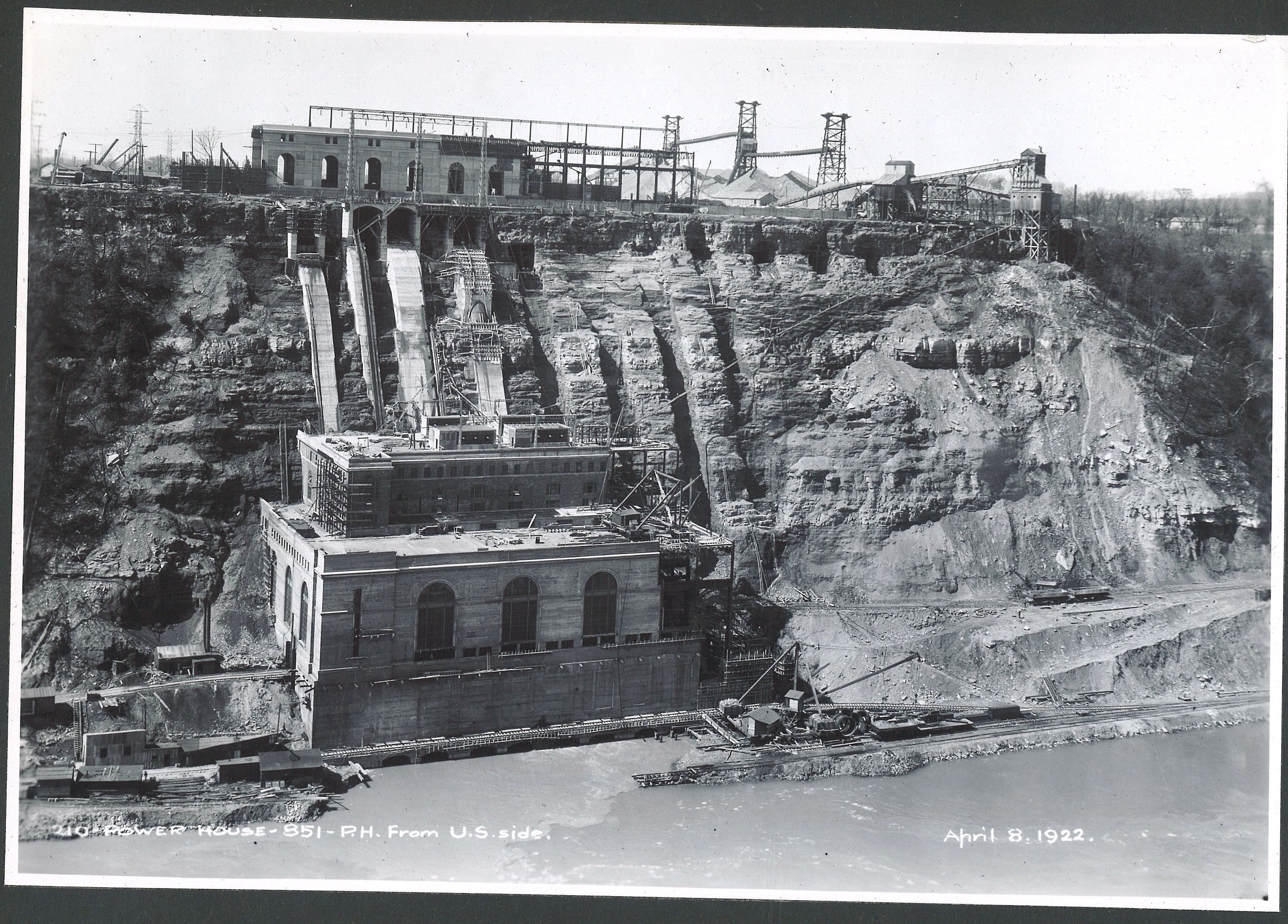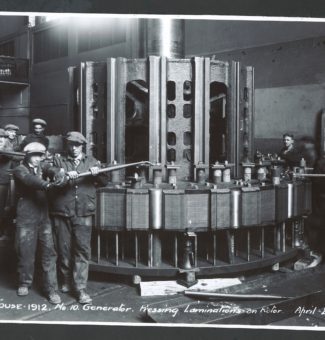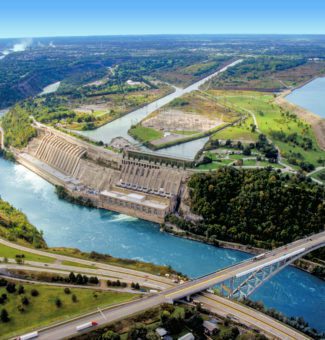OPG’s Sir Adam Beck I hydro station celebrates a century of clean power
A century ago, OPG’s flagship Sir Adam Beck I Generating Station (GS) went into service, becoming the largest hydroelectric station in the world and cementing Ontario’s – and Canada’s – public power legacy.

The 10-unit, 446-megawatt (MW) station first began producing power toward the end of 1921 under its original name, the Queenston-Chippawa Hydroelectric Plant. It was renamed after Sir Adam Beck in 1950 on the 25th anniversary of his death.
Like Beck, who was the founder of OPG’s predecessor company and the father of public power in Ontario, Sir Adam Beck I GS serves as an icon of the beginnings of large-scale hydro development and the public power movement in Ontario.
“Sir Adam Beck I was the station that put Ontario and Canada on the map in terms of large hydroelectric generation,” said Nicolle Butcher, Senior Vice President of Renewable Generation and Power Marketing at OPG. “Just as it did when it went into service, the station continues to produce affordable, clean power for the entire province. And with our continuing investment into the station, this facility will reliably serve Ontario for decades to come, playing a vital role in achieving our net-zero emission goals. We are proud of this station’s important legacy.”
“Sir Adam Beck I was the station that put Ontario and Canada on the map in terms of large hydroelectric generation.”Nicolle Butcher, Senior Vice President of Renewable Generation
As the cradle of the province’s electricity industry, the Niagara Falls area hosted numerous small hydro projects in the late 19th and early 20th centuries. But it wasn’t until the Province of Ontario authorized construction on Sir Adam Beck I – the first major publicly owned generating station in Ontario – that the power of the Niagara River could be harnessed to provide truly affordable power for the entire province.
At the time it was built by Ontario Hydro, OPG’s predecessor, the 18-storey-high facility was the largest hydroelectric generating station in the world.
Due to its sheer size and scope, the construction was an ambitious undertaking for the 10,000 or so workers who broke ground on the new plant in 1917. Almost immediately, workers faced immense challenges and obstacles, including the arrival of the Spanish Flu pandemic in 1918, one of the most virulent pandemics in global history.
But they persevered, and through their efforts the station was completed, making Ontario Hydro the province’s largest power producer.
The electricity generated here helped power new household technologies like radios, washing machines, and televisions, and fueled Ontario’s growing industrial sector. Ultimately, the station touched the lives of millions of Ontarians as it powered the province through the recovery after the First World War and the pandemic, the Great Depression, another world war, and through the great post-war expansion period.

For its important role in Canada’s history, the station was declared a National Historic Site of Canada in 1990.
More than a century later, Sir Adam Beck I GS and its dedicated employees are still powering Ontario’s economy and net-zero efforts as part of a larger complex of hydro operations, which includes the 1,516 MW Sir Adam Beck II GS and the 174 MW Sir Adam Beck Pump GS.
The entire generating complex produces about 12,300 gigawatt-hours of energy each year – about 40 per cent of OPG’s hydroelectric production, or about nine per cent of Ontario’s energy needs.
Since these stations are not built directly at the Falls, like many other hydro stations, water from the Niagara and Welland rivers is diverted above Niagara Falls to the stations through canals and diversion tunnels. This water is then released into the lower portion of the Niagara River.

Guiding the stations is an international water treaty to ensure enough water is available for tourist season at Niagara Falls and the other power generating needs of the region, including for New York State.
Over the years, most of the station’s original units have been replaced with modern, more efficient generators.
Currently, two of the last remaining historic units are undergoing replacement. The G1 and G2 turbine-generators, which operated under the older 25 Hz frequency and were decommissioned in 2009, are being swapped out for two modern 60 Hz units. When the project wraps up in 2022, these new units will add about 125 MW of incremental generating capacity to the plant, ensuring decades of affordable, clean power.
As OPG celebrates the 100th anniversary of this flagship station, we will be commemorating Sir Adam Beck I with stories on its people, projects, and legacy in the coming months.
100 Years of Clean Power
OPG’s flagship Sir Adam Beck I Generating Station went into service 100 years ago
Subscribe and stay informed
Sign up to receive the latest news, project updates, and event information from OPG.














